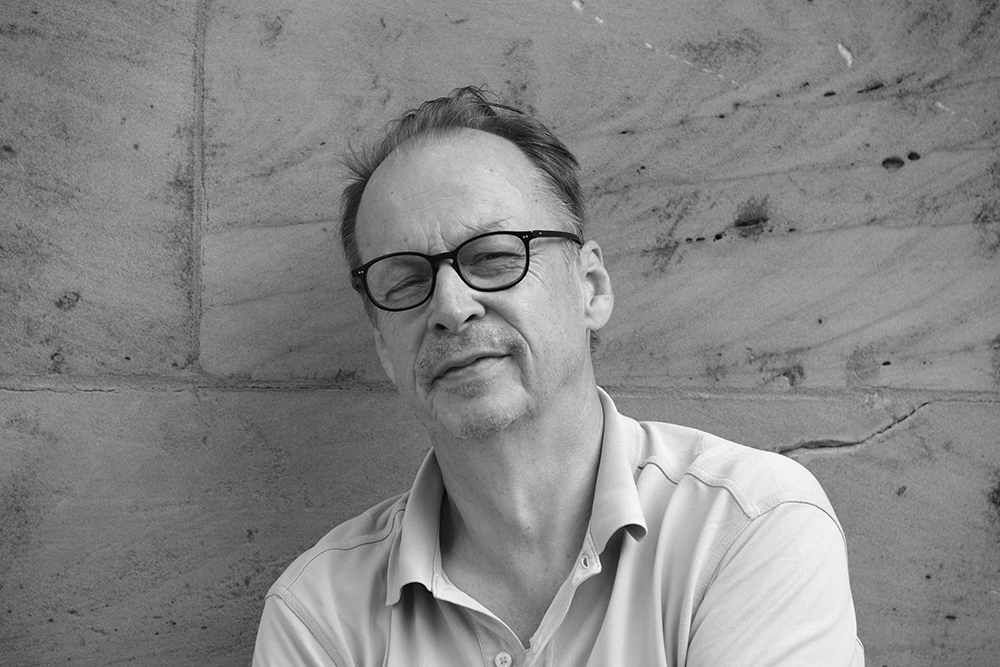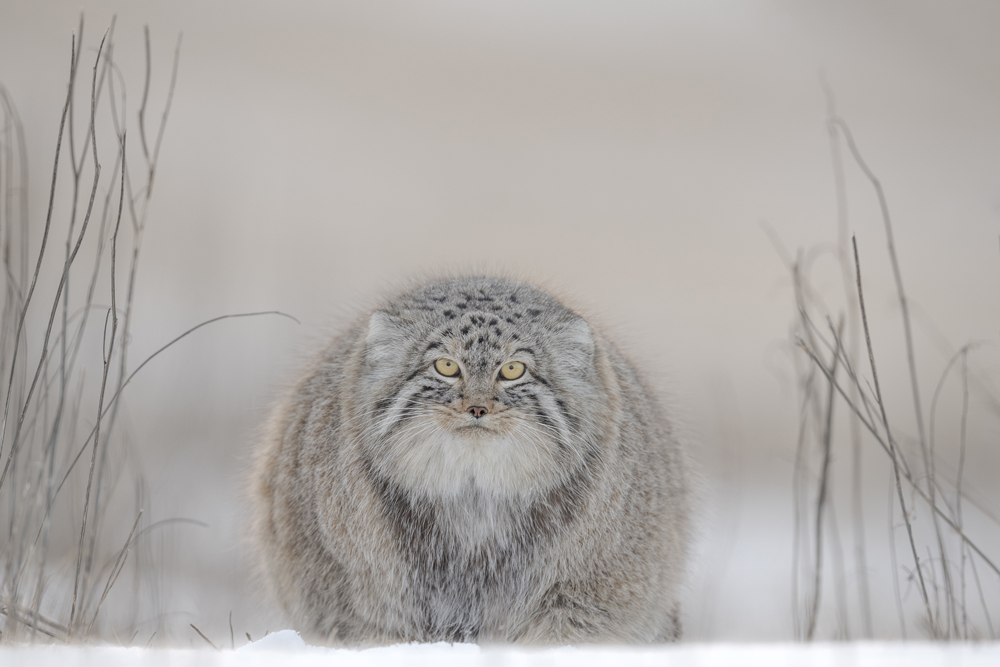We spoke to Manfred about the changes he has witnessed in the photo world in the last few decades as well as what kinds of images have captured his imagination.

Please can you tell us a little bit about you and your career to date. How did you get into the world of photography? What roles have you undertaken?
As a student I earned some extra money (and access to the kind of music I liked) by photographingrock concerts. In the daytime, I took classes at Munich University and that’s where I had my first lessons on (American) photo history. Before that, during a year abroad in Paris, I fell in love with photography after visiting exhibitions in galleries and museums. I started out as a part time photographer and earned money as a student of American culture [not sure what he means here]. I then became a film editor at a magazine and eventually moved on to writing about photography.
Are you a photographer yourself and what genres of photography particularly interest you?
Today it would be preposterous to call myself a photographer, considering the quality of work of the people I deal with on a daily basis. But yes, I still like to take pictures.
Professionally, I’m interested in any kind of photography, that gives me a new perspective; one that is true to the subject and is not in a copycat style. I’m interested in any kind of photography genre so long as the approach is unique.
Have you or do you commission photography? If so, how do you choose which photographer to commission?
No, fotoMAGAZIN does not commission photographers, unfortunately. We publish already existing work and our aim is to introduce a photographer to our readers, rather than a subject.
What sorts of changes have you seen in the world of photography and publishing etc. during your time in the industry?
I’ve witnessed a lot of changes over the years; the move from analogue to digital, the deterioration of the print industry, the move of the readers and the media to websites and social media as well as the dramatic changes in the picture agency scene and the reduction of earnings for freelance photographers. I’ve also seen a small revival of analogue photography.
The question for the years to come is whether earnings in some fields of photography will be sufficient enough to make a living as a photographer who has to support a family.
The photobook industry
The photobook industry has seen a lot of changes and the business model has changed completely. The publishers have pushed most of the production risk to the photographer, who now has to raise often thousands of pounds upfront to finance a project. At the same time the photobook hype is dwindling in a market which seems to be flooded with lousy book projects, many of which are doomed to end up in the basement of those photographers who have made them.
The revival of analogue film photography
On the plus side, though, I’ve noticed the younger generation rediscovering the analogue world. This may have started with Lomo and Holga toy camera marketing campaigns but is now mostly based on the idea of slow photography and of the positive/negative imprint on traditional film material. It’s a lasting impression that’s visible, tactile and real as opposed to the virtual digital data that lives in your computer and other digital devices.
All that leads to the unique one-off print produced with traditional print techniques and which the art market in particular treasures and embraces. I find the analogue world catches me with surprise moments – created in the redlight district of your home-lab – and results in the beauty of the imperfect as opposed to the cold robotic perfection of the digital world.
I’ve also seen the development of AI software that’s seemingly leading us to a new constructed reality. It shows that digital can do a lot of things, but it’s becoming ever clearer to me that even a faulty old Polaroid can charm more people than a lot of robotic, clean digital images.
The rise of photography collectors at art auctions
I’ve seen the discovery of photography by the German museum scene. It was initially a phenomenon of the 1990s, when auction houses in Germany started photography auctions and the Düsseldorf School of fine art photographers made its strongest imprint on the art market. At the same time museum curators started buying strongly and some of the pioneer collectors in Germany started selling to them. Fine art photography had entered the museum scene and suddenly photography exhibitions were not just happening in dedicated photo museums but were seen in art galleries with a visual remit, too. Museum acceptance is still tough for traditional wildlife photography, which seems to be accepted only in very few museums in Germany.
The ‘greening’ of the industry
The next big change I see coming is the ‘greening’ of the industry. Environmental awareness is one of the driving forces of today’s society and it affects our industry too. I’ve seen more and more industry players focusing on environmentally friendly materials and technology, especially in the print industry. And, if we look a bit further ahead, I suspect we’ll see how analogue film being removed from the market by new environmental laws governing the materials it’s made from.
At the same time the new green awareness is a fundamental part of the image selection process of today’s competitions like Travel Photographer of the Year and Wildlife Photographer of the Year. The idea of an untouched nature is quite nice and romantic but mostly it’s an illusion. It’s important to show the world what’s happening rather than transporting a fairytale construction and this is a growing trend in conversations behind the scenes in photography competitions.
Who are your photographic heroes or key sources of inspiration?
Early on my heroes were Cartier-Bresson, Doisneau, Ronis, Lartique, Brassaï and then I discovered William Klein, Robert Frank, Frank Capa, Diane Arbus, Richard Avedon and Irving Penn. Still remaining sources of inspiration include William Eggleston, Pentti Sammallahti, Peter Lindbergh, Robert Frank … the list goes on.
For me William Eggleston is the real godfather of most of today’s images on Instagram (if we forget those billions of selfies). His vision of the vernacular world, that non-decisive moment and the aesthetics of the everyday environment, his sense of colour and his exquisite taste for fine printing are recognizable everywhere today. He was an inspiration for me as someone who followed his own path early on and found his own images and aesthetic style.
Do you see differences in approach to photography between Europe and any of the rest of the world?
Today the difference is maybe felt most strongly in the dealing with nudity and nude photography in the US and Europe. This US public prudishness, which censors all kinds of nudity on Instagram and Facebook, is forced upon Europe and is visible in much of the US magazine world. Europe seems to tolerate nudity more and have a more natural approach to the body. But we are affected by the global power of US internet companies.
Where do you look for new talent? Who have you discovered recently that we should keep an eye out for?
I’m looking everywhere I can. Portfolio reviews, jury work, surfing the web, Instagram, recommendations.
My most recent discovery is Xuan Hui Ng in landscape photography. I like the almost tactile closeness to the powers of nature. The way she makes me feel those natural phenomenons, which she depicts with lyrical quality.
Also watch out for Liza Ambrossio in art photography. This young Mexican artist has found a truly unique approach to visualise an inner psychic landscape, with strong images that stick with you instantly.
What advice can you share with our readers that will help them finesse their portfolios?
Look around and then find your own approach. Look around the corner and walk new paths. Listen to others and then find your own voice. Present your work only, when you really believe in your work. Persist. Never copy last year’s heroes.
When you’re judging the awards what kinds of things do you look for in a portfolio?
Images that surprise me! Photos with a new angle, a new subject, a special emotion, possibly humour. Images that tell a story or that make me learn something.
Take last year’s “Landscapes and earth elements” winner Alessandro Carboni and his images of Wild Sardinia. Those trees in the midst of a snowstorm have a strong painterly quality and the snowflakes create a pointillistic feel.




I found Mouneb Taim’s winning portfolio in the “People of the World” quite enriching. His images from war-torn Syria have given this category depth and taken our attention to the bitter reality of daily life in that part of the world. Those strong people-pictures never look like stolen moments. Mouneb approaches those people as an involved photographer and knows how to tell their story.




What grabs your attention in the single image categories?
Again, I like to be surprised by an image. That surprise can be just a warm ray of light on a lonesome person on the beach like in Solitude winner Mark Anthony Agtay or “Colours of Life” category winner Peter Walmsley with his photo of a food market. It combines the blur of the moving crowd with the stillness of the dealers waiting on the side.


Another favourite of mine was Joshua Holko’s almost monochrome Pallas Cat in Snow (which won a special mention) . With its direct gaze it had a surreal quality, reminding us of a character from Alice in Wonderland. Images like this one do make photography a real wonderland. They don’t need extravagant photography techniques, as long as they capture a unique moment that sends our imagination somewhere else.

Are there some common mistakes you see photographers making when entering competitions that you could tell us about? How can they overcome or avoid these?
Too many photographers are looking at last year’s winners and trying to send something along the line. Don’t.
Too many photographers are also selecting an incoherent “best of” selection in portfolios when it would be helpful to have a storyline connecting their entries in a field.
Is there anything else we haven’t covered that you’d like to add?
Inform yourself constantly. Work on a coherent approach to whatever you are interested in. For those with professional aspirations: Be aware that this is a job that may give you a hard time making a living and also give you some extraordinarily enriching experiences at times.
So you’ll need endurance and talent – and ideally some extra money to get through tough times.

